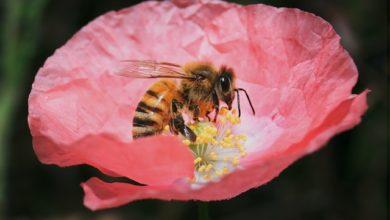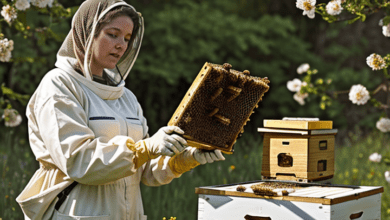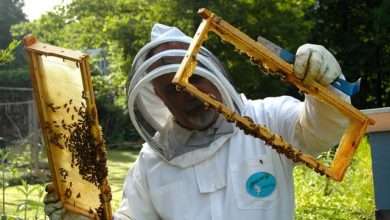The Secret Power of Honey Bee Clustering in Winter: Unveiling Nature’s Masterful Survival Strategy
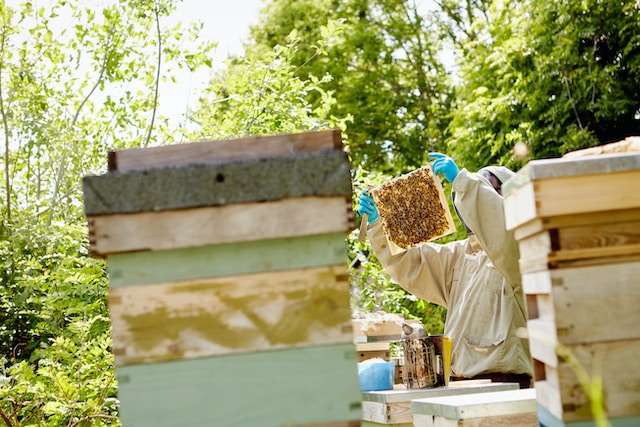
The Fascinating World of Honey Bee Clustering
In the enchanting realm of honey bees, a captivating phenomenon known as clustering takes center stage during the winter months. As temperatures drop and resources become scarce, these industrious insects display their remarkable survival strategy.
This article explores the importance of honey bees and delves into the captivating world of clustering, shedding light on this remarkable behavior and its significance in ensuring the winter survival of these wonderful creatures.
The Importance of Honey Bees
- Honey bees are crucial pollinators: These tiny creatures play an indispensable role in the pollination of a plethora of flowering plants, ensuring bountiful harvests of fruits, vegetables, and nuts. In fact, honey bees are responsible for pollinating approximately one-third of the world’s crops.
- Production of honey and beeswax: Aside from pollination, honey bees produce honey and beeswax, which have been valued by humans for centuries for their various applications, including culinary uses, medicinal properties, and candle-making.
The Winter Survival Challenge
- The arrival of winter poses numerous challenges for honey bees, primarily due to the scarcity of nectar and pollen, as well as the plummeting temperatures.
- The survival of the entire colony is at stake: The upcoming months become a crucial test for the honey bee colony, where they must effectively manage their limited resources to ensure the survival of the entire colony and the subsequent spring reestablishment.
The Science of Honey Bee Clustering
Bees are known for their highly organized social systems, and clustering is a fundamental aspect of their survival and collective functioning. We will explore the definition and explanation of honey bee clustering, as well as the various factors that influence this fascinating behavior.
Definition and Explanation of Honey Bee Clustering:
Honey bee clustering refers to the formation of dense groups or clusters of bees, often seen hanging from tree branches or other surfaces. These clusters are composed of thousands of individual bees tightly bound together, resembling a living mass.
The primary purpose of clustering is to regulate the temperature within the colony, protect the queen, and ensure the survival of the entire bee community.
Factors Influencing Honey Bee Clustering Behavior:
- Temperature and Thermoregulation:
One of the primary drivers of honey bee clustering is temperature. Bees have a narrow range of temperature tolerance and need to maintain specific warmth levels within the cluster to ensure their survival during colder periods.
Clustering is a way for bees to maintain a constant temperature of roughly 92-93°F (34°C). In contrast, the outside temperature in winter can range from as low as -49°F (-45°C) up to as high as 77°F (25°C). To do this, bees huddle closely together and vibrate their wings in order to generate heat. The outer layer of bees insulates and protects the inner bees from external cold temperatures. This heat is then used to maintain a constant temperature within the cluster and keep the colony warm.
- Availability of Honey Stores:
Honey bee clusters also form in response to the availability of honey stores within the colony. Bees require a reliable and sufficient food source to sustain themselves during periods of reduced foraging opportunities, such as winter months.
Clustering allows them to conserve energy by huddling together and consuming stored honey. The presence of abundant honey stores encourages the bees to form larger clusters, ensuring their survival during times of scarcity.
- Colony Size and Strength:
The size and strength of a honey bee colony play a crucial role in clustering behavior. Larger colonies tend to form more substantial clusters due to the abundance of worker bees available.
These larger clusters have a greater ability to generate and retain heat, providing stability and protection to the colony during adverse conditions.
Furthermore, stronger colonies with a larger number of worker bees can better defend against potential predators, making clustering an effective defense mechanism.
- Genetic Factors:
Genetic factors also play a role in honey bee clustering behavior. Some bee colonies exhibit a higher propensity for clustering due to genetic variations that influence their clustering tendencies.
These genetic factors can contribute to certain colonies being more inclined to form larger, more tightly knit clusters, enhancing their ability to withstand harsh environmental conditions.
Understanding the Benefits of Honey Bee Clustering
Here, we will delve into the various benefits that arise from honey bee clustering, highlighting its role in maintaining optimal hive temperature, efficient utilization of honey stores, and defense against predators.
Increased Warmth and Temperature Regulation:
- How clustering helps maintain optimal hive temperature:
Honey bee clusters serve as a natural solution for maintaining the ideal temperature within the hive, crucial for the survival of the colony. By clustering together, bees generate and retain heat, effectively regulating their immediate environment.
This behavior becomes particularly crucial during colder months or regions with harsh climates, where external temperatures may plummet to threatening levels.
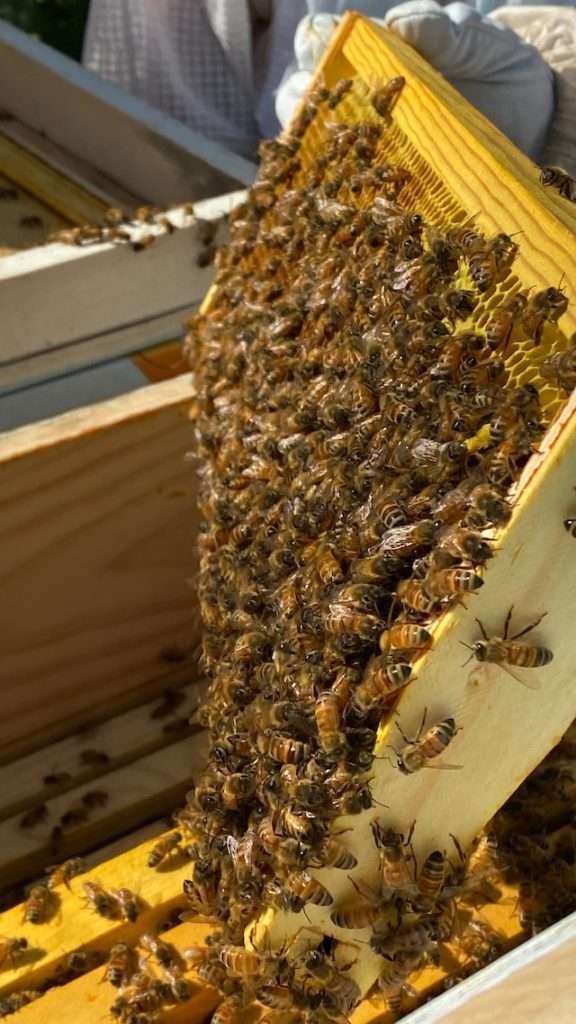
- Adaptations for maintaining thermal stability:
To further enhance their ability to regulate temperature, honey bees have developed remarkable adaptations. Bees in the outer layers of the cluster insulate those within, effectively preventing heat loss. As the outermost bees become colder, they rotate positions with warmer bees from the inner layers, maintaining a constant and optimal temperature throughout the cluster.
Efficient Utilization of Honey Stores:
- The role of clustering in conserving energy and resources:
Honey serves as a precious resource for honey bee colonies, providing them with essential energy and nourishment. Clustering helps optimize the use of honey stores by minimizing energy wastage.
In colder conditions, bees within the cluster consume honey to generate heat through metabolic activity. The tight cluster formation reduces heat loss, ensuring that honey is efficiently utilized to sustain the colony.
- How clustering promotes optimal honey consumption:
Clustering enables bees to access honey stores more effectively, preventing unnecessary movement within the hive. As bees shift positions within the cluster, they maintain proximity to the honeycomb, readily consuming honey as needed. This promotes a balanced consumption pattern, avoiding excessive depletion or wastage of honey reserves.
Defense against Predators and External Threats:
- Collective defense mechanisms during winter clusters:
Clustering not only aids in thermal regulation but also enhances the hive’s defense capabilities. In winter, when predators or external threats pose a serious risk, bees in a cluster work collectively to deter intruders.
By forming a tightly knit mass, bees shield each other, making it challenging for predators to infiltrate. The collective buzzing and movement within the cluster further warns potential threats, deterring them from attacking the hive.
- Enhanced survival chances against predators:
The clustering behavior of honey bees significantly increases their survival chances against predators. Predators, such as wasps or rodents, find it difficult to access individual bees within a tight cluster.
The combined efforts of bees in guarding the cluster create a formidable defense mechanism, discouraging predation attempts. Through clustering, honey bees demonstrate their remarkable adaptability and resilience against external threats.
Winter Clustering Strategies in Different Honey Bee Species
Here, , we will explore the fascinating world of winter clustering strategies in different honey bee species, focusing on a comparison between Apis mellifera (Western honey bee), Apis cerana (Eastern honey bee), and other observed species. We will also delve into the unique adaptations and strategies employed by these species, such as varroa mite resistance and cluster size and composition.
Comparison of Clustering Behaviors between Different Honey Bee Species
- Apis mellifera (Western Honey Bee)
The Western honey bee, Apis mellifera, is renowned for its impressive clustering behavior. During winter, worker bees form a tight cluster around the queen, creating a central core of warmth. The outer layer of bees insulates the cluster, effectively maintaining a stable temperature range within.
Through coordinated movements and vibrations of their flight muscles, the bees generate heat, which keeps the entire cluster warm. This strategy allows them to survive in colder climates with temperatures as low as -30°C (-22°F).
- Apis cerana (Eastern Honey Bee)
In contrast to Apis mellifera, Apis cerana, commonly known as the Eastern honey bee, exhibits variations in its clustering behaviors. When clustering, these bees tend to form smaller, looser clusters compared to their Western counterparts.
This clustering adaptation allows them to maintain a more flexible structure, enabling efficient heat distribution throughout the cluster. Apis cerana has evolved to inhabit regions with milder winters, where averagely lower temperatures seldom drop below -10°C (14°F).
- Other Species Observed Clusters
Aside from the Western and Eastern honey bees, various other honey bee species have demonstrated clustering behaviors. For example, the giant honey bee (Apis dorsata) constructs impressive single comb nests, which can house tens of thousands of individuals. These nests are exposed, making clustering even more crucial to protect the colony from extreme temperatures.
Unique Adaptations and Strategies among Different Species
- Varroa Mite Resistance
Varroa mites (Varroa destructor) pose a significant threat to honey bee colonies worldwide. However, certain honey bee species have developed unique adaptations to combat these parasitic mites. For instance, some populations of Apis mellifera have developed grooming behaviors that target and remove mites from their bodies.
Apis cerana, on the other hand, displays an inherent resistance to varroa mites through a shorter grooming time, reducing the mite population and limiting their negative impact on the colony.
- Cluster Size and Composition
Cluster size and composition play a crucial role in the survival of honey bee colonies during winter. While larger cluster sizes indicate a robust and healthy colony, smaller clusters suggest potential issues such as queen loss or disease.
Furthermore, the composition of clusters, including the proportion of worker bees, drones, and the queen, can influence the colony’s ability to generate and maintain heat effectively.
Environmental Impact on Honey Bee Clustering
The clustering behavior of honey bees is influenced by various environmental factors, including climate and weather patterns, as well as human-induced factors such as habitat loss and pesticide use. Understanding these impacts is essential for effective conservation efforts and the sustenance of honey bee populations.
Effect of climate and weather patterns on clustering behavior:
- Seasonal variations and impact on clustering:
Honey bee clustering behavior is greatly influenced by seasonal variations. During colder months, such as winter, honey bees form tight clusters to maintain warmth within their colonies. The bees generate heat by muscular activity, ensuring the survival of the entire colony.
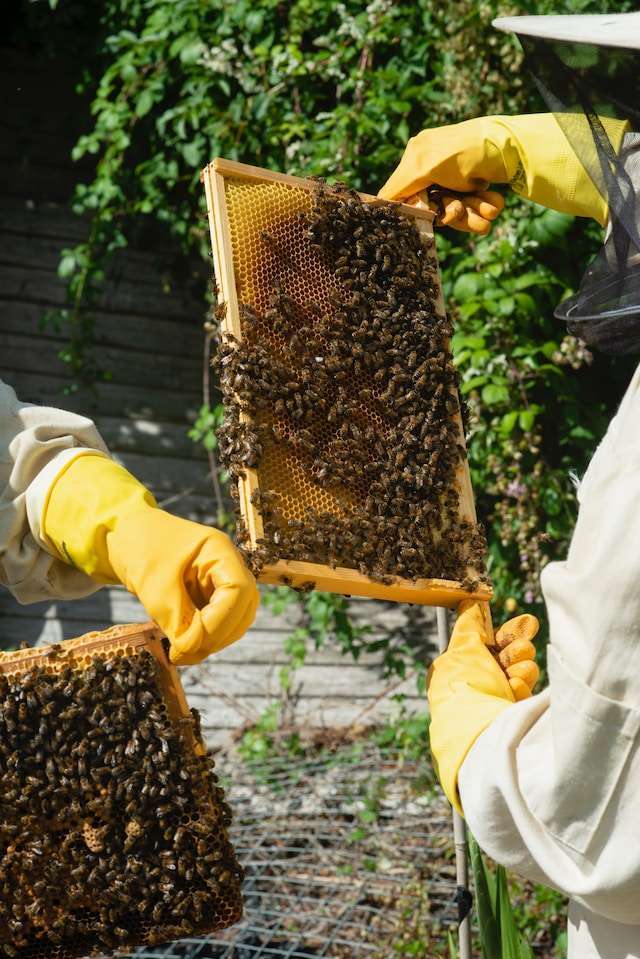
As seasons transition to spring and summer, clustering behavior changes as bees provide temperature regulation during cool nights or protect the brood from excessive heat during the day. Studying these seasonal variations in clustering helps researchers understand the bees’ ability to adapt and respond to changing environmental conditions.
- Extreme weather conditions and their influence:
Extreme weather events, such as heatwaves, heavy rainstorms, and hurricanes, greatly impact honey bee clustering behavior. Heatwaves can disrupt clustering patterns, causing bees to spread out or abandon their clusters to seek cooler areas. Excessive rainfall may lead to flooding, leaving bees with limited dry spaces for clustering.
Additionally, strong winds and severe storms can damage hives, resulting in the disintegration of clustering behavior. Understanding how honey bees react to extreme weather conditions is crucial for predicting their resilience and implementing appropriate management strategies.
Human-induced factors affecting honey bee clustering:
- Impact of habitat loss and pesticide use:
The loss of diverse habitats due to urbanization, land conversion, and intensive agriculture has a profound impact on honey bee behavior, including clustering. With reduced forage availability, bees may have difficulty finding adequate resources to sustain their clusters, affecting their overall health and survival.
Furthermore, the use of pesticides in agricultural practices can directly impact honey bees. Exposure to pesticides can disrupt their nervous systems, impairing their ability to communicate and coordinate clustering behavior. Consequently, habitat loss and pesticide use pose significant threats to honey bee clustering and population stability.
- Importance of conservation efforts for honey bee populations:
Recognizing the crucial role honey bees play in maintaining healthy ecosystems, conservation efforts are vital to protect their populations. Conservation strategies should focus on creating and maintaining diverse floral resources that support honey bee forage throughout the year. This includes promoting the planting of flowering plants, establishing protected areas, and reducing pesticide usage through sustainable agricultural practices.
By safeguarding honey bees’ habitats and minimizing their exposure to harmful chemicals, conservation efforts can help maintain their clustering behavior and population viability.
Implications for Beekeepers and Agriculture
There is a significance of understanding winter clustering for beekeepers and the agricultural benefits that honey bee winter clustering provides. Beekeeping practices and hive management during winter play a crucial role in ensuring the survival and well-being of honey bee colonies.
Additionally, the agricultural sector greatly depends on honey bee pollination for increased crop yield and ecosystem balance. By diving into these topics, we aim to provide essential insights and knowledge to both beekeepers and those involved in agriculture.
Importance of understanding winter clustering for beekeepers:
Beekeeping practices and hive management during winter:
Winter is a critical time for honey bee colonies, as they must endure harsh environmental conditions. Understanding how bees cluster together during this season is vital for beekeepers to effectively manage their hives. The following points highlight the key aspects of beekeeping practices and hive management during winter:
- Beehive insulation and ventilation: Beekeepers need to ensure that their hives are properly insulated to protect the bees from extreme cold temperatures. Simultaneously, adequate ventilation is necessary to prevent moisture buildup, which can lead to mold and other hive issues.
- Supplemental feeding: As natural food sources become scarce during winter, beekeepers should provide their colonies with supplementary food, such as sugar syrup or fondant. This ensures that the bees have sufficient nutrition to survive the winter months.
Benefits of providing suitable conditions for clustering:
Creating favorable conditions for winter clustering in honey bee colonies yields several advantages for beekeepers:
- Enhanced survival rates: When bees cluster together, they generate warmth and maintain a stable temperature within the hive. This communal behavior improves the chances of survival for the colony throughout winter.
- Minimized resource consumption: Clustering reduces the energy expenditure of individual bees as they leverage collective heat. As a result, the stored honey reserves are utilized more efficiently, helping the colony sustain itself until spring.
Agricultural benefits of honey bee winter clustering:
Role in pollination and crop yield:
Honey bees’ winter clustering has direct implications for the agricultural sector, particularly concerning pollination and crop yield. The following points highlight the significance of honey bee winter clustering in this context:
- Pollination efficiency: Bees that cluster during winter emerge healthier and stronger in spring, ready to engage in efficient pollination. Their enhanced vigor positively impacts the amount of pollen and nectar they can collect and distribute, thereby increasing crop pollination rates.
- Increased crop yield: Adequate honey bee pollination greatly contributes to increased crop yield. Clustering during winter ensures the survival and health of honey bee colonies, enabling them to effectively pollinate various crops during the subsequent growing season.
Importance of honey bee survival for ecosystem balance:
Beyond agriculture, honey bee survival is crucial for maintaining ecosystem balance. Several plant species depend heavily on honey bee pollination for reproduction, and these plants, in turn, serve as vital resources for numerous other organisms. The survival of honey bees during winter, facilitated by their clustering behavior, helps sustain the delicate ecological balance.
Conclusion
Honey bee clustering in winter is a perfect example of nature’s masterful survival strategy. By clustering together, honey bees are able to keep warm, conserve energy, and reduce water loss.
Furthermore, the size of the cluster is quickly adjusted according to changing temperatures. It is amazing to think that these small creatures are able to survive the bitter cold of winter simply by huddling together and vibrating their wings.
Thus, by understanding the science behind honey bee clustering in winter, we can begin to see the secret power of this remarkable behavior and appreciate the sheer tenacity of the honey bee.
FAQs
What is bee clustering in winter, and why is it considered a masterful survival strategy?
- Bee clustering in winter refers to the behavior of honey bees gathering and forming tight clusters to maintain warmth and survive cold temperatures. This strategy ensures the survival of the colony by conserving energy and utilizing collective heat generation.
How does honey bee clustering work, and what roles do individual bees play within the cluster?
- Honey bee clustering involves bees closely assembling and forming a cluster with the queen at the center. The bees on the outer layer of the cluster act as insulators, protecting the inner bees from the cold. Within the cluster, bees continuously rotate between the outer and inner positions to evenly distribute warmth.
Does bee clustering in winter benefit the entire hive, including brood and queen bees?
- Absolutely! Bee clustering benefits the entire hive. The warmth generated within the cluster protects the brood, ensuring their survival during cold weather. The queen is safeguarded within the cluster, allowing the colony to maintain its reproductive capabilities when spring arrives.
How is the clustering behavior of honey bees different from other insects during winter?
- Unlike many other insects, honey bees are highly social creatures. Their clustering behavior is unique as they actively generate heat by shivering their flight muscles. This enables them to maintain a stable internal temperature, even in freezing conditions.
Are there any risks associated with honey bee clustering in winter?
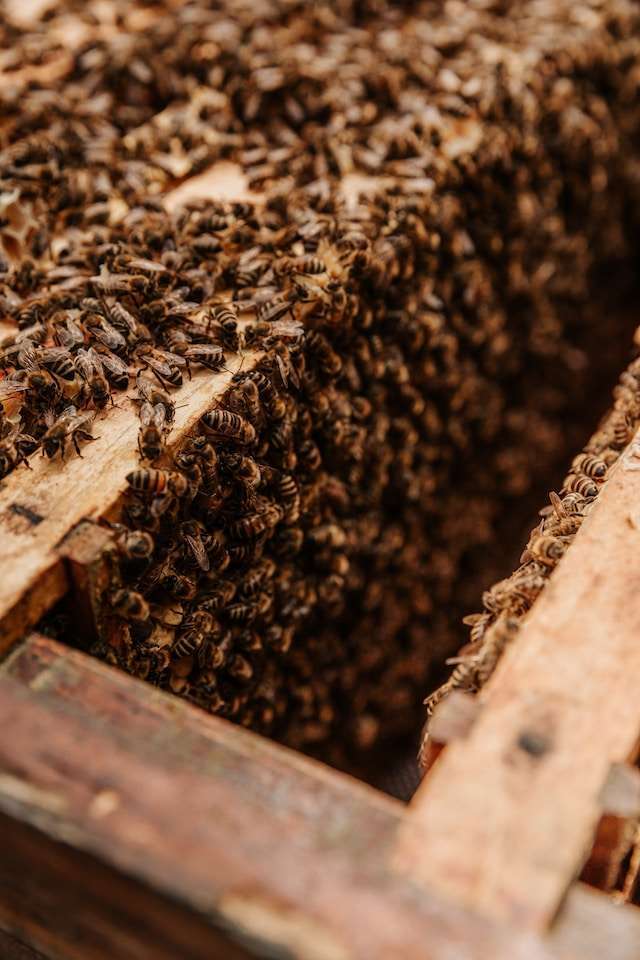
- While clustering is an effective survival strategy, it is not without risks. If the cluster becomes too loose or disassembles during extremely cold periods, it can lead to a loss of warmth and potentially endanger the colony. Additionally, insufficient food stores can pose a threat, as bees cannot forage during winter.
Can beekeepers support honey bee clustering in winter?
- Beekeepers can provide essential support to honey bee clustering by ensuring the hive has sufficient honey stores and insulation to prevent heat loss. Careful monitoring and management practices in the winter months help promote the survival and well-being of clustered honey bee colonies.
How long do honey bee clusters typically remain intact during winter?
- The duration of honey bee clusters can vary depending on local climate conditions and the availability of food stores. In colder regions, clusters can persist for several months until spring arrives, while in milder climates, cluster formations may be briefer.
How does understanding honey bee clustering benefit beekeepers?
- Understanding honey bee clustering in winter allows beekeepers to plan and manage their hives more effectively. By providing adequate resources and maintaining optimal conditions for clustering, beekeepers can increase the survival rates of their colonies during winter.

